Library
Music of a thousand years
by Ann E. Lucas
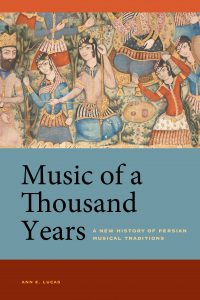 Iran’s particular system of traditional Persian art has been long treated as the product of an ever-evolving, ancient Persian culture. In Music of a Thousand Years, Ann E. Lucas argues that this music is a modern phenomenon indelibly tied to changing notions of Iran’s national history. Rather than considering a single Persian music history, Lucas demonstrates cultural dissimilarity and discontinuity over time, bringing to light two different notions of music-making in relation to premodern and modern musical norms. An important corrective to the history of Persian music, Music of a Thousand Years is the first work to align understandings of Middle Eastern music history with current understandings of the region’s political history.
Iran’s particular system of traditional Persian art has been long treated as the product of an ever-evolving, ancient Persian culture. In Music of a Thousand Years, Ann E. Lucas argues that this music is a modern phenomenon indelibly tied to changing notions of Iran’s national history. Rather than considering a single Persian music history, Lucas demonstrates cultural dissimilarity and discontinuity over time, bringing to light two different notions of music-making in relation to premodern and modern musical norms. An important corrective to the history of Persian music, Music of a Thousand Years is the first work to align understandings of Middle Eastern music history with current understandings of the region’s political history.
Pages: 288
ISBN: 9780520300804
DOI: https://doi.org/10.1525/luminos.78
Trim Size: 6 x 9
Illustrations: 13 color images, 7 maps, 14 line art illustrations
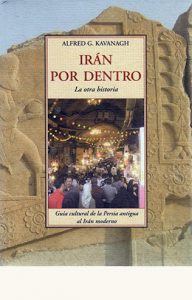
Colección: Terra Incognita 97
Pages: 805
Size: 15 x 21 cm
Binding: Rustic
ISBN: 978-84-9716-652-2
Year: 2.010
Irán por Dentro. La otra historia.
Algred G. Kavangh
This cultural guide to Iran is a useful introduction to one of the most multifaceted, rich and varied civilizations in the world. After reading this book, the traveler will feel better equipped to establish direct contact with this great country, and the simple reader will find himself immersed in the captivating world of a land and a culture whose contribution to the literary, artistic and intellectual heritage of the humanity is of immense value.
The book the reader holds in his hands is a cultural guide that traces four thousand years of political, religious, social and cultural events from ancient Persia to modern Iran. In the Persian worldview, the part participates fully, and thus, for example, in a Persian miniature there is a complex symbology that allows us to understand the relationship between the characters, their gestures and the verses chosen by the artist. No look exhausts the multiple routes of that internalized space. This has been the criterion adopted in this work: allowing the reader to choose between multiple routes, designing the chapters like the streets of a bazaar that, at some point, intersect with others, which allows us to discover unexpected itineraries. In this exciting journey through the history, religions (with special emphasis on Sufism and Shiism), law, language and literature, science, art, society, the city and the customs of Iran, the author In many cases, it leaves the Persian authors of all ages to engage in a dialogue with the reader directly, although this is not a book written from scholarship, but from fascination and the conviction that there are no cultures alien to us, only far away. Books like this help bring us closer to those cultures that can teach us so much and enrich us.
The work includes a large number of unpublished images, maps and engravings compiled by the authors that allow the reader to enjoy the visual splendor of the Persian civilization from its origins to the latest political events in Iran after the June 2009 elections.
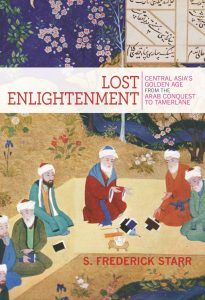
ISBN: 9780691165851
Published: 06/02/2015
Copyright: 2013
Pages: 680
Size: 6 x 9.25 in.
Lost Enlightenment: Central Asia’s Golden Age from the Arab Conquest to Tamerlane.
Princenton University Press
The forgotten story of Central Asia’s enlightenment—its rise, fall, and enduring legacy
In this sweeping and richly illustrated history, S. Frederick Starr tells the fascinating but largely unknown story of Central Asia’s medieval enlightenment through the eventful lives and astonishing accomplishments of its greatest minds—remarkable figures who built a bridge to the modern world. Because nearly all of these figures wrote in Arabic, they were long assumed to have been Arabs. In fact, they were from Central Asia—drawn from the Persianate and Turkic peoples of a region that today extends from Kazakhstan southward through Afghanistan, and from the easternmost province of Iran through Xinjiang, China.
Lost Enlightenment recounts how, between the years 800 and 1200, Central Asia led the world in trade and economic development, the size and sophistication of its cities, the refinement of its arts, and, above all, in the advancement of knowledge in many fields. Central Asians achieved signal breakthroughs in astronomy, mathematics, geology, medicine, chemistry, music, social science, philosophy, and theology, among other subjects. They gave algebra its name, calculated the earth’s diameter with unprecedented precision, wrote the books that later defined European medicine, and penned some of the world’s greatest poetry. One scholar, working in Afghanistan, even predicted the existence of North and South America—five centuries before Columbus. Rarely in history has a more impressive group of polymaths appeared at one place and time. No wonder that their writings influenced European culture from the time of St. Thomas Aquinas down to the scientific revolution, and had a similarly deep impact in India and much of Asia.
Lost Enlightenment chronicles this forgotten age of achievement, seeks to explain its rise, and explores the competing theories about the cause of its eventual demise. Informed by the latest scholarship yet written in a lively and accessible style, this is a book that will surprise general readers and specialists alike.
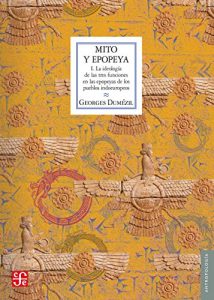
Isbn: 9786071635037 Presentación: rustico Peso: 0.85 kg Idioma: ESPAÑOL Idioma Original: ESPAÑOL Editorial: FONDO DE CULTURA ECONÓMICA (FCE) Número de páginas: 701 Año de edición: 2016 Colección: ANTROPOLOGÍA Área temática: ANTROPOLOGÍA
Mito y epopeya. I. L
Mito y epopeya. I. La ideología de las tres funciones en las epopeyas de los pueblos indoeuropeos.
FONDO DE CULTURA ECONÓMICA (FCE)
Myth and epic is the result of comparative studies by Georges Dumézil, divided into three volumes. The work refers to the idiosyncrasy, theology and mythology common in the Indo-Iranian, Greek, Latin, German and Celtic peoples and exposes its hypothesis of trifunctionality (the sacred, physical strength and abundance) present in the cultural scheme common to these peoples , according to Dumézil, Indo-European culture. The main results of the study were: to determine the way in which these cultures were embodied within a mythological corpus, and to contribute to the still tortuous knowledge of the stories of ancient peoples.
Ficha catalográfica
Mito y epopeya. I. La ideología de las tres funciones en las epopeyas de los pueblos indoeuropeos/Georges Dumézil ; trad. de Eugenio Trías—México : FCE, 2016
701 pp. ; 23 x 17 cm.—(Colec. ANTROPOLOGÍA)
1. Mitología indoeuropea
LC BL660 V.1Dewey291.13D479m V.1

ITHACA PRESS. History – Middle East Studies – Paperback • 152 mm x 229 mm • ISBN 9780863725197 • 1030 pages
Europe’s Debt to Persia from Ancient to Modern Times
provides a fresh scholarly perspective on how over the centuries Persian kings and noblemen protected and sponsored the religious and intellectual heritage of both Judea and Greece alongside that of Persia itself. Minou Reeves makes available for the first time portraits of the life, upbringing, education and works of generations of ardently Hellenophile Persian thinkers and scientists, and demonstrates the pivotal influence they exerted on the works of the emerging European Renaissance and Enlightenment. The book covers the period between 546 BC and 1807 AD. It begins with the conquest of Ionian Greece by Persia when, it is argued, the thinking of Zoroastre, the great ethical monotheist, natural
philosopher and Prophet of Persian Antiquity, influenced and became fused in the ensuing centuries with that of Greece’s great philosophers and scientists, Socrates, Plato and Aristotle. The year 1807 AD is the year of the publication of Friedrich Hegel’s Phenomenology of the Mind, inspired by the ethical monotheism of Zoroastre and Plato, the De Anima of Aristotle and On The Rational Soul of the Persian philosopher Avicenna. Minou Reeves challenges established ideas about the relationship between Persia and Greece as she argues that, contrary to received wisdom, Persia and Greece were not at odds with one another but were rather intertwined, and exercised a profound influence on one another’s cultural, aesthetic, philosophical and scientific thought. Using original documentation in several European languages, Reeves presents the case for the intellectual marriage of Persia and Greece, and for this fusion to have formed the basis of the European Renaissance and Enlightenment.
Minou Reeves, was born in Tehran in 1946, the daughter of a distinguished Iranian historian of Persian Antiquity. She has a Swiss Baccalauréat in European history and literature, a BA in German and French from the National University of Iran and an MA in German from University College, London. Her career took her from the Royal Iranian Diplomatic Service to working directly for the Persian Crown until the Revolution of 1979. She now lives in England and is the Author of Behind the Peacock Throne; Female Warriors of Allah: Women and the Islamic Revolution; and Muhammad in Europe: A Thousand Years of Western Myth-Making.

Miraguano Ediciones
Collection: Libros de los Malos Tiempos nº 8
ISBN: 978-84-7813-442-7
Edición de: Alba, Ramón
Nº de Edición: 4
Libro Impreso
Pages: 270
Size: 120 x 190 mm
Embajada a Tamerlán
Ruy Gonzáles de Clavijo
The Castilian monarch Henry III, in his purpose of seeking allies against the expansion of the Turkish armies, whose threat was already looming over Europe, sent in 1403 an embassy to Tamerlane, the lord of Samarkand, who a year earlier had defeated and taken prisoner to Sultan Bayezid in the Battle of Angora.
Tamerlane, or Tamorlan as it is cited in this text, was a military leader of Turkish-Mongol origin who, like Genghis Khan, with whom he has been compared, tempered his first weapons at the head of a party of adventurers and robbers, arriving to achieve a great reputation as a warrior, thanks to which, in little more than two decades, he managed to gather a powerful army with which he built an Empire that stretched from Delhi to Moscow, and from the northern Chinese border to Anatolia, conquering cities like Delhi, Baghdad or Damascus.
Ruy González de Clavijo marched at the head of Enrique III’s diplomatic expedition to Samarkand, the capital of the Great Tamerlane Empire. The trip lasted for three years and his detailed account was written upon his return, in 1406. The meticulous descriptions, historical, geographical and even anthropological news, make this work one of the most appreciated by Orientalists and historians who emphasize the curiosity and impartiality of the narrator, as well as his sobriety and clarity of style. All of which makes the Embassy to Tamerlane one of the most entertaining and interesting travel books, as well as accurate, of medieval Spanish literature.
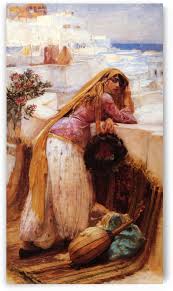
EDHASA Narrativas históricas ISBN: 978-84-350-6210-7 638 págs 980 g 15 x 23 cm. Barcelona 2010
La Reina de la Ruta de la Seda
AGNES IMHOF (traducción de Isabel de Miguel)
Like the mythical Sherezade of the Thousand and One Nights, Arib, the most famous singer and courtesan in the East, managed to seduce the most powerful men with her songs – but not only with her songs – and become the most influential woman in his time. But to get there, she had to travel a path full of hardships, risks and adventures. Suddenly she went from being a girl who refused nothing to being persecuted by justice, and that marked her character in a very hard way and put her in contact with aspects of the social organization of her country that until that moment she was not aware of.
Inspired by a real character, the story of Arib evokes all the fascination of the Eastern courts – their smells, their flavors, their colors – while delving into the intrigues and betrayals that preside over a historical moment of transition, with the schism between Sunnis and Shiites on the one hand and the influence of the Holy Roman Empire of Charlemagne on the other. Desired by both worlds, Arib must use all her power of seduction and her artistic gifts to achieve her goals.

La Rosaleda
Saadi de Shiraz
Editorial El Cobre
Barcelona, España. (290 Págs.)
LA ROSALEDA
In the troubled times after the Mongol invasion of Persia, Sacdí traveled extensively through Asia Minor, Syria, Egypt, and Iraq. He also visited Central Asia and India. For twenty years he lived on roads and inns with the survivors of the massacres: merchants, villagers, thieves, beggars and Sufi dervishes … Sacdí preached, learned and gave advice. Already mature, he returned to his native Shiraz, where he was considered a sage. His best known works are Golestan or La rosaleda (1258) and Bostan or El huerto (1257). The rose garden, directly translated from Persian for this edition, is made up of various personal stories and anecdotes. His texts combine prose with short poems containing aphorisms, advice and humorous reflections. Sacdí is aware of the absurdity of human existence and enjoys comparing the fate of those who depend on the powerful with those who, even though they are poor, are free. Throughout his adventures, this character tells us about his adventures and reflections with humor and wisdom. It is an essential text of universal literature, the great medieval classic of Iran. The rose garden is the Persian Don Quixote.
The Persian poet Saadi (1184-1283), whose full name has been Muslih-ud-Din Mushrif-ibn-Abdullah, stood out mainly for two literary pieces of a moral nature: Bostán (The Orchard, 1257) and Gulistan (The Rose Garden) (1258). But it is La rosaleda (Ed. El Cobre), which surpasses the model worn out by the didactic literature, then strongly rooted in the parable. Although the sapiential character of the volume is undoubted, achieved through the ingenious insertion of Arab and Persian sayings, Muslim traditions, Koranic sentences; Saadi also accommodates legendary and real characters. In this way he not only guides the nature of the reader towards a higher moral life; but in turn, reveals the world of his time; thus being a book of philosophical as well as literary relief. A saying is as important as the background of the character saying it.
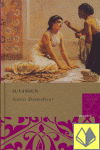
EDITORIAL: El Cobre Ediciones
Literatura: historia y crítica
COLLECTION: Clásicos de la diversidad
ISBN: 978-84-96501-02-7
EAN: 9788496501027
Pages: 392
Year: 01-11-2005
SUVUSHUN
Daneshvar, Simin (traducción de Joaquín Rodríguez Vargas)
First published in 1969, Simin Daneshvar’s Savushun has gone through sixteen editions and sold half a million copies, a record for a literary work in modern Iran. The reason is not obscure. Daneshvar’s style is sensitive and imaginative. His story follows basic cultural themes and metaphs. It goes straight to the hearts of a generation of Iranian readers, striking special chords of emotion and memory of the recent past.
Suvushun enriches the self-understanding of a generation. It frames the experience of Iranians who have lived through the mid-century decades leading up to the 1979 revolution. Those Iranians who feel an immediate identity with the main characters, each of whom struggles in their daily lives with social forces and historical events that gave prerevolutionary Iran its characteristic hopelessness and emerging despair, so misunderstood by outsiders …
(Brian Spooner, introducción a la edición inglesa de Persian Classics)
 UNA VIEJA AMISTAD. Cuatrocientos años de relaciones históricas y culturales entre Irán y el mundo hispánico
UNA VIEJA AMISTAD. Cuatrocientos años de relaciones históricas y culturales entre Irán y el mundo hispánico
Camacho Padilla, Fernando / Escribano Martín, Fernando
Modern relations between Iran and the Hispanic world had their starting point at the end of the 16th century, and they gained strength at the beginning of the 17th century during the reigns of Felipe III and Abbas el Grande. Both monarchs maintained an intense diplomatic contact through their respective representatives. In the mid-nineteenth century, Madrid and Tehran temporarily resumed their contacts, and half a century later, just into the twentieth century, the first agreements were established between Iran and the main Latin American powers. However, it was not until the middle of the 20th century when relations were finally consolidated, accelerating the mutual cultural and human exchange. In general, Iran’s relations with the Spanish-speaking countries have been excellent, regardless of the convulsive political processes that have developed in all of them, which has in turn generated great interest at all levels, such as the state, the social and the economic.
SÍLEX EDICIONES (Colección: Sílex Universidad)
Tapa blanda, España
ISBN: 978-84-18388-27-9 EAN: 9788418388279
Size: 215 x 140 mm. Weight: 588 gramos Pages 518 Date: 23-10-2020

